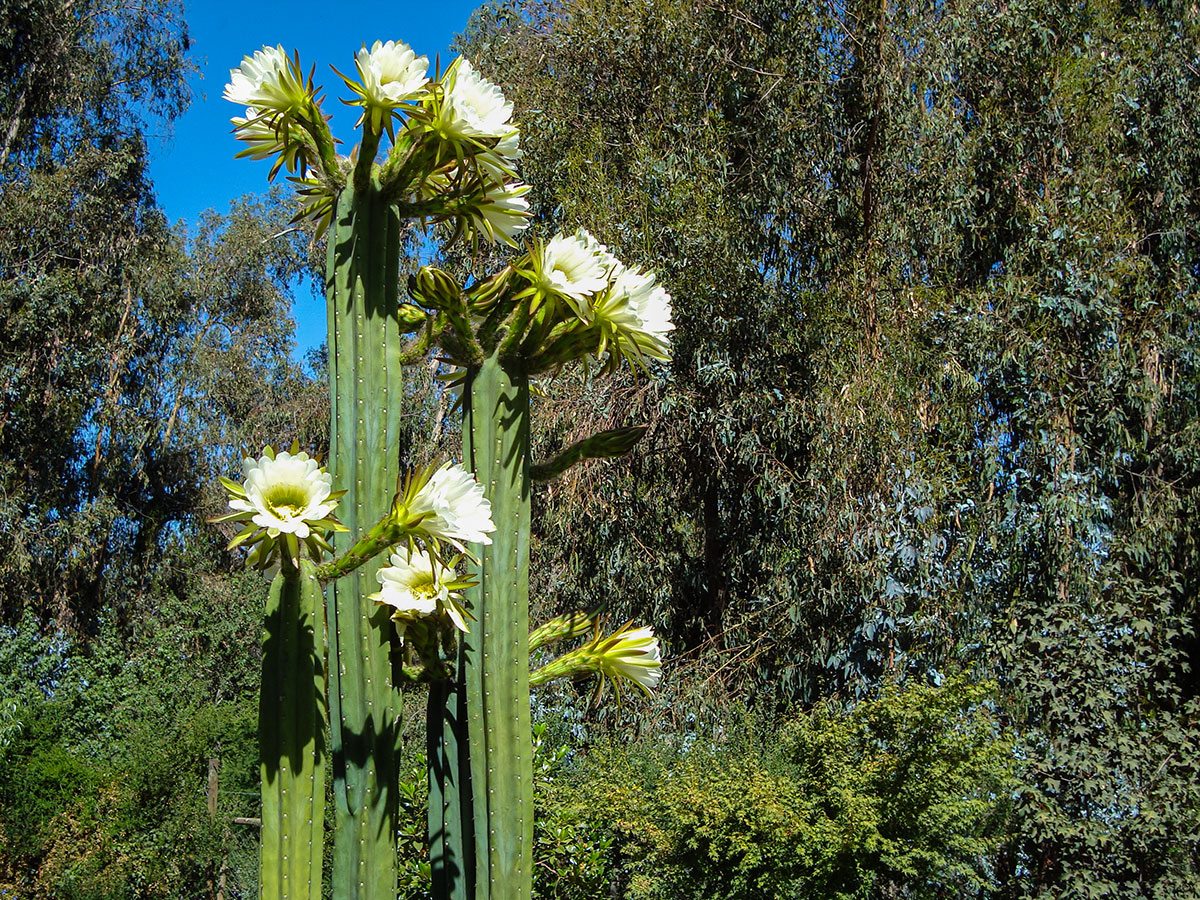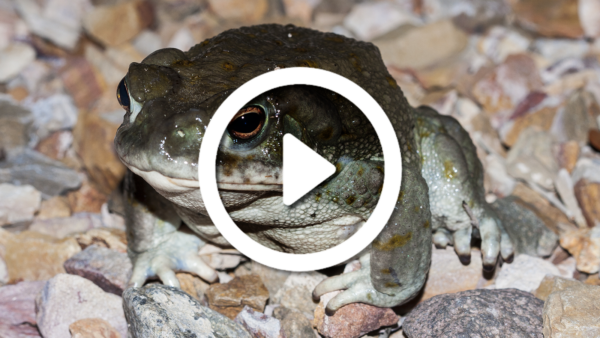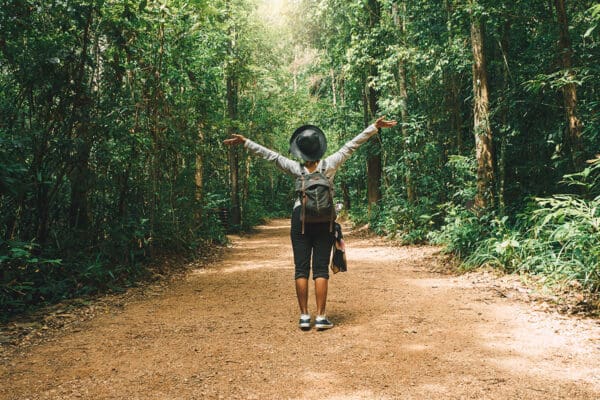Medical Editor: Dr. David Cox, PhD, ABPP
What is San Pedro?
San Pedro cactus, also known as huachuma (wa-choo’-ma), is one of several cacti that produce the alkaloid mescaline, the psychoactive compound that inspired the term psychedelic in the first place.
San Pedro grows prolifically throughout the Andes’ mountain ranges and is prized as an ornamental and landscape plant worldwide, known for its massive and short-lived blooms. The cactus’ flowers only open at night and just for a few days — sometimes unfurling for only a single night before beginning to decay. Their fragrance attracts nighttime pollinators like bats, and the cactus produces fruits after fertilization.
The huachuma cactus became known colloquially as San Pedro, or St. Peter, after the invasion of the Spanish conquistadors and their armies. The medicine has been used in ceremonies for millennia by Andean cultures, alongside coca, datura, and tobacco, to support physical health and spiritual well-being.
Described as a form of devil-worship by the invading Spanish missionaries, the huachuma ceremony was condemned while colonial domination nearly wiped out traditional ecological knowledge and cultural practices. Still, an uninterrupted lineage evolved alongside the missionaries’ ideology, who claimed “this is the plant with which the devil deceived the Indian”. San Pedro survived among Peruvian healers who still use the medicine for divination and treating disease.
In recent decades Westerners have begun traveling to Peru to participate in authentic and legal San Pedro ceremonies.
Is San Pedro legal?
The San Pedro cactus could be considered semi-legal in the United States. The cactus itself is legal, however, isolating the psychoactive compound mescaline within it is not.
As with all naturally occurring psychedelics, mescaline is biosynthesized and naturally produced by living organisms. Commercial nurseries and hobbyist gardeners sell San Pedro every day. In fact, many people buy San Pedro for landscaping or as an ornamental plant in a pot without knowing that it is a visionary plant. But it is illegal to prepare it for consumption.
Before the passage of the Controlled Substances Act in 1970, mescaline was used alongside psychotherapy and demonstrated therapeutic potential. After it was classified as a Schedule 1 drug, it became illegal to use, process, cultivate, or sell mescaline extracted from San Pedro, and other mescaline containing cacti.
Globally, mescaline is regulated as an illicit substance, and transporting cacti might be illegal. Countries allow varying exemptions for research, religious sacrament, and hobbyist horticulture. San Pedro’s use in healing ceremonies is legal for those outside of the original culture in Peru.
As drug policies continue to evolve, it is conceivable that mescaline could re-emerge as a therapeutic tool. It is currently being used in one psychedelic clinical trial investigating the comparative effects of classical psychedelics, and was used recently in a comprehensive hallucinogenic study looking at the effects of psychedelics on mood.
Pharmacology of San Pedro
Beyond mescaline itself, San Pedro contains dozens of alkaloids that interact with the body on a multitude of levels. The cactus has been used in folk healing since time immemorial, both for physical and supernatural diseases like susto, vaho de agua, mal aire, mal hecho, shuka, conditions which traditional healers attribute to spiritual causes.
The primary psychoactive compound is mescaline, considered a classical psychedelic because it binds to the 5HT2A serotonin receptor. It also shows an affinity for and the 5-HT2C receptor in the brain and causes physiological impacts that can leave a person in an altered state for hours. It increases activity in the right side of the brain’s striatum limbic system. Cross-tolerance has been shown to occur within this classification of drugs and is restored after 3-4 days of abstinence.
Mescaline is biosynthesized, meaning it is created naturally by biologically living organisms. The distribution of mescaline within San Pedro varies, and so do its physiological impacts. Mescaline has a low potency, and the volume required for research studies can be significant. It’s available as a research chemical and is usually in the form of a whitish-colored powder.
The body reacts to mescaline with an increase in stress hormones, causing pupil dilation, perspiration, hypertension, nausea, and increased temperature. Muscle strength temporarily weakens, the reflexes and coordination are diminished, and people experience intestinal and sometimes uterine contractions.
Mescaline is the longest studied psychedelic compound in terms of its chemistry, and several synthetic mescaline alternatives exist— but clinical trials are uncommon when compared to other psychedelics with greater potency. Early research at the beginning of the 20th century featured mescaline-induced mind states in an attempt to study psychosis and theories of schizophrenia.
More recently, the US-based chemist Alexander Shulgin used mescaline as a starting point for synthesizing dozens of experimental psychedelic compounds. In fact, Shulgin published a psychedelic cult classic focusing on these compounds, called PiHKAL: A Love Story, an acronym for “phenethylamines I have known and loved”. Mescaline has also emerged as a potential candidate for microdosing, although there is evidence suggesting that microdosing psychedelics may not work any better than a placebo.
Mescaline is a molecular alkaloid and is considered a classic psychedelic, like psilocybin and LSD, but is in a different classification of drugs called phenethylamines. It can be smoked or insufflated (snorted), but is typically consumed orally. In the case of San Pedro, it is usually consumed as a decoction prepared from boiling water and sliced cactus.
Once consumed, mescaline is absorbed quickly by the digestive system, with a significant distribution reaching the liver and kidneys. The exact mechanisms of metabolization are not yet fully understood. But, it is thought that different organ systems metabolize mescaline through different localized routes.
Dose of San Pedro
San Pedro is typically ingested as a dried powder or a tea made from the cacti. Dosing is imprecise if using a live cactus, as the distribution of mescaline is not consistent throughout all parts of the cactus. An average dose of pure mescaline is 20-500 mg. The onset will begin within 1-3 hours depending on the metabolization rate and may last up to 10-12 hours.
Typically, an active dose of mescaline will last under 24 hours, with visual effects averaging around 10-12 hours. People experience distortions in sensory stimuli, like sounds and colors, and even experience synesthesia. While intoxication can occur, it is reportedly unlikely for a fatality to result from San Pedro consumption alone. There are mescaline deaths reported in animal studies, but these occurred at a level of mescaline toxicity which is unlikely to happen in a San Pedro ceremony.
San Pedro contains more alkaloids than just mescaline. It is thought that these alkaloids work together in an entourage effect, however, little research has been done on them. San Pedro also has various concentrations of other compounds, including anhalonidine, hordenine, and tyramine. Consuming mescaline-containing cacti, rather than pure mescaline, will result in a different experience, mainly because the dosing will be imprecise and may last longer than with other cacti.
While there are no significant studies to verify mescaline distribution throughout San Pedro, it is generally thought that the external green tissue contains more mescaline than the internal white tissue near the center.
Risks of Using San Pedro
Any psychedelic is potentially risky for people with pre-existing conditions, especially those dealing with hypertension or heart disease. Mental health risks are more significant for those with a history of psychosis, but in general, mescaline is low risk — with some very rare and potentially fatal exceptions.
Mescaline is considered the least potent classical psychedelic. San Pedro is thought by some to be among the safest of psychoactive plants — but traditional ceremonies might involve additional plants with toxicity potential (like datura), and mescaline-based synthetics can be harmful.
Synthesized mescaline is not a prolific substance among people who use psychedelics, but people who microdose mescaline might use synthetics. There are potentially lethal novel psychedelic substances derived from mescaline called NBOMes (N-Benzylphenethylamine). These synthetics share the same unique classification of drugs called phenethylamines and may produce similar effects but carry a much higher risk of fatality.
People who seek mescaline from illicit sources may inadvertently encounter a potentially toxic synthetic instead. Any person or provider working with mescaline should make sure to test the substance to confirm it is not dangerous. While testing kits are usually legal, mescaline is not. People who microdose isolated mescaline should be cautious of contaminants.
San Pedro is not recommended for pregnant people because mescaline has been shown to cause uterine contractions, however some mescaline-containing substances have been used by indigenous groups to maintain reproductive health.
Mescaline is rapidly metabolized in the liver, and for this reason there could be a potential for complications for those with liver conditions. Early studies involving mescaline and ethanol withdrawal did not demonstrate complications or life-threatening symptoms — but the real risks are unknown without clinical trials.
Though mescaline is used as a research chemical, it is not typically studied in clinical trials for toxicity, nor is San Pedro. Anecdotally, the additional plants used in San Pedro ceremonies, such as the potentially lethal datura, are more likely to cause complications than the mescaline-containing cacti itself.
Currently, there are no clinical studies investigating the safety of San Pedro. But it is considered relatively safe — so long as one does not have any pre-existing health conditions of the heart or primary organs.
Working with well-referenced and experienced healers during ceremonies is essential for minimizing risk in a San Pedro ceremony. So too is communicating any pre-existing health concerns with the provider, especially those requiring medication.
Because mescaline can interfere with some antidepressants containing MAOIs, a provider might advise tapering off these medications. However, this can be risky on its own and should only be done under medical supervision.
Preparing for a San Pedro Experience
Preparing for a San Pedro experience will vary depending on whether it takes place in a traditional ceremony or not.
A traditional San Pedro ceremony will require a greater level of preparation, such as limiting alcohol, meat, and rich foods in the days before. Some providers suggest preparing through meditation, journaling, and other spiritually-oriented practices before the ceremony. In a traditional ceremony, the local healer, sometimes called a Yachakkuna, will consume San Pedro as well.
An altar called a mesa will likely be created before the San Pedro ceremony, featuring meaningful items collected by the Yachakkuna over time. Flowers, stones, and other objects are precisely placed to help shape the energetic container of the experience and transfer power to the healer. Depending on the Yachakkuna and the ceremony’s intention, they may offer a traditional sacrifice (guinea pig) in exchange for divining healing insight.
As with any psychedelic experience, preparation includes intention setting and self-reflection. In the case of San Pedro, it is also advised to arrive in a spirit of gratitude and reverence for the plant teacher that makes healing possible.
What to Expect From a Trip
Using isolated, synthetic mescaline will likely result in a slightly different trip than if using San Pedro. As a living organism, every cactus grows a little differently and will present varying concentrations of alkaloids, including mescaline, ranging from 150 mg to 1.2g of mescaline per 50g of dried cactus. Whereas mescaline might be administered according to body weight, San Pedro cannot be dosed as precisely.
The San Pedro cactus might be presented as a powder ground from dried cactus or sliced into wedges and boiled in water as a decoction. In traditional ceremonies, the participants receive a smaller dose than the healer and may not even experience psychoactive effects. Depending on what the Yachakkuna determines is the cause of disease, additional plants may be prepared for treatment.
The tea tastes bitter and unpleasant, and many people tend to feel nausea and vomit after drinking. The effects usually begin between 15-40 minutes after consuming the tea, with the experience building in intensity over the first 1-3 hours before reaching the peak around hour three or four.
San Pedro effects can be felt for 12-14 hours, depending on the dose ingested and the person’s physiology. The most active part of the experience can last for two hours, with people reporting a relatively easy comedown and an overall experience more similar to MDMA than LSD. This post-peak period is an ideal opportunity for reflection and to lay the groundwork for post-trip integration.
History of San Pedro
While the emergence of mescaline use in the West is one of psychedelic culture’s most defining moments, another, more ancient story places the mescaline-containing cactus San Pedro, or huachuma, among the oldest recorded visionary plants used in human history.
The Chavin culture is named in reference to an ancient religious site called Chavin de Huantar. The place was a center of life, commerce, and technology for an ancient Andean society that spanned a large geographic region. Residual Echinopsis pachanoi cactus elements have been observed in several ancient sites, with the earliest fossil evidence of San Pedro use dating back 8,000 years.
Chavin culture developed specific artistic aesthetics evident in ceramics, sculpture, and architecture — and much of these aesthetics and symbology are thought to be inspired by the use of San Pedro, or huachuma. In the Quechua language, the term translates to removing the head.
Interestingly, San Pedro grows in the highlands, but the Chavin de Huantar’s site is located beyond this cacti’s typical range. It has been suggested that this ancient culture began to cultivate the mescaline-containing cactus, effectively domesticating it for sacred use.
Evident in sculpture and artwork throughout the site, huachuma was transported there for ritual and group ceremonies. Carvings at Chavin de Huantar reveal god-like figures, images of people consuming San Pedro and transforming into jaguars and other animals. Archeological evidence reveals ceramic containers with pouring lips, shaped like the cactus, suggesting to some archeologists that these vessels were ritually significant and meant to serve and share traditional San Pedro tea.
As Christianity and the Spanish conquistadors began pushing into the Andean homelands, the indigenous healing rituals and religious ceremonies tied to huachuma were hidden and blended syncretically with settler religious ideologies. The cactus and traditional rituals survived the onslaught of colonization but emerged as San Pedro, or St. Peter, who guards the gates to heaven — a nod to huachuma, which also opens the gates to the spiritual realm.
In a traditional ceremony, healers called Yachakkuna are responsible for carrying on the lineage and caring for the community’s health. The Yachakkuna consumes the mescaline-containing cactus to help gain insight into a participant’s illness. In this way, San Pedro works as a diagnostic tool for identifying the causes of disease, whether physical or spiritual.
San Pedro is used for more than diagnosis, but also spiritual well-being. Traditional healers use the San Pedro rituals to facilitate clearing emotional energies. Participants frequently experience spiritual healing in the form of tears.
San Pedro has long been regarded as a beneficial protector of marriage and family relationships and is often planted near homes. Unlike other mescaline-containing cacti, San Pedro is not a legally protected religious sacrament.
Is Using San Pedro Ethical?
There are a few ethical implications related to the consumption of San Pedro worth mentioning.
First, this species is frequently recommended as the more ethical option among mescaline cacti — because peyote is a threatened species with considerable cultural baggage surrounding its use. As it stands today in the US, the Native American Church has an exemption to use peyote as a religious sacrament, however, the use of peyote by those who are not members of federally recognized tribes is illegal.
A San Pedro ceremony may be unethical if the facilitator illegitimately claims to be from a specified lineage, especially when charging money and profiting off an indigenous culture’s traditional knowledge. This is different from sitting in a ceremony with friends and family.
It is common for San Pedro to be used outside of traditional ceremonies without crossing ethical boundaries — ethical use means this is done with a healthy respect to the plant teacher, the participants, and the ritual space.
Another ethical consideration surrounding San Pedro involves researchers and practitioners. As drug policies continue to evolve, San Pedro will likely be studied in greater detail, both from a pharmacological standpoint and within psychotherapy, as a component of psychedelic-assisted therapy.
To ensure that San Pedro’s use remains ethical, it will be essential to start considering the implications of applying the Nagoya Protocol to any current and future research involving this healing cactus. The psychoactive compound in San Pedro is only one of the dozens of active chemicals produced by the cactus, and the entourage effect of these alkaloids with mescaline has not been studied yet.
Established by the United Nations in 2010, the full name of the agreement reads “The Nagoya Protocol on Access to Genetic Resources and the Fair and Equitable Sharing of Benefits Arising from their Utilization.” Said simply, the Nagoya Protocol aims to protect traditional ecological knowledge (TEK) from exploitation, which has historically been common.
In the case of San Pedro, exploitation might look like attempts to patent traditional healing modalities, such as communal ceremony, or the antimicrobial peptides found in the cactus. Because San Pedro also has additional medicinal properties, the cactus is also at risk of biopiracy from medical researchers. An ethical future for San Pedro will need to keep indigenous sovereignty in mind.
Choosing a San Pedro Provider
As with any psychedelic, working with experienced and qualified facilitators is a must.
Qualified San Pedro providers include traditional healers in Peru as well as people with experience in psychedelic-assisted therapy who can provide references. While traditional ceremonies might have the healer ingesting San Pedro as well, this is not recommended for providers working outside of the ritual environment. Instead, a sober sitter or guide who is well experienced with San Pedro dosing is the ideal.
Ideally, a center and provider will require the completion of a medical intake form to identify any pre-existing health conditions. The provider might also incorporate other plants in a ceremony and should provide information on all plants used. While San Pedro is generally safe, there should be a protocol to handle any emergencies that might arise. If a center or provider is not asking questions or taking precautionary measures to ensure safety, it might be better to look elsewhere.
San Pedro ceremonies are legal in Peru. A psychedelic tourism industry has emerged featuring retreat centers that offer massage, workshops, group therapy, and potentially additional plant medicines such as ayahuasca. Depending on one’s desires, a multi-day or multi-week retreat might be ideal. Be sure to allow room for post-trip rest and integration before returning to your day-to-day life.
Sometimes San Pedro retreat centers and practitioners might prioritize profit over care. Before committing to a retreat center, people should conduct personal research to get a sense of how previous participants felt about their experiences and their specific providers.
Searching through social media pages, online forums, and general searches about any history of scams or adverse health events will help ensure a safe experience. And while a friend’s recommendation is valid, it should always be backed up with research before making a final decision when choosing a San Pedro retreat center.
A final consideration is cost. Meals might be included in the price or might have an additional charge. Some centers are more remote and inaccessible than others, and travel from the airport may or may not be covered. Medical travel insurance is recommended if a complication does arise. But, it does not typically cover transportation to emergency medical centers.
Healing potential of San Pedro
While mescaline has been studied longer than any other psychedelic, the therapeutic potentials of San Pedro have yet to be studied in clinical trials.
Like other classic psychedelics, mescaline-containing cacti have the ability to induce mystical experiences capable of catalyzing profound and lasting personality changes. Common mental health ailments like depression, PTSD, addictive behaviors, and anxiety disorders are all potentially treatable with these psychedelics.
From an indigenous perspective of illness, all disease has a spiritual component that can be treated in an effort to heal the physical element. Mescaline-containing cacti like San Pedro have been used in healing ceremonies for millennia, not only for spiritual ailments but also for physical diseases like cancer and paralysis and as topical treatments for inflammation and pain. But even in these cases, the spiritual aspect of the San Pedro ceremony plays a part in the healing process.
Cultural beliefs and group settings may also play a role in healing with San Pedro. Psychedelics taken in traditional settings and in nature have demonstrated enhanced therapeutic potential, especially with long-term integration. With this in mind, it is possible that aspects of the traditional San Pedro ceremony, held in a naturalistic setting, can uniquely complement psychotherapy by maximizing the psychological benefits of nature relatedness — but until thorough research is conducted, these claims cannot be verified.
Drawing from the long history of psychedelic medicine ceremonies, some researchers today suggest it is worth revisiting this enduring power of communal ritual used in combination with mind-altering psychedelics. In this regard, San Pedro might one day be an easy-to-grow, safe-to-use option for community-based group therapy processes.
A Final Thought:
San Pedro is a relatively low-risk psychedelic. As a plant medicine, it grows quickly and abundantly and is not currently at risk of extinction in its natural habitat, unlike the sacred peyote cactus. It has an uninterrupted lineage of use going back thousands of years but is not a legally protected religious sacrament or part of a closed spiritual tradition like peyote.
Traditional ceremonies are lawfully held in Peru, and some people use San Pedro in non-traditional settings. While there is not a great deal of research on San Pedro specifically, there is clinical evidence of the benefits of its primary psychoactive compound, mescaline, which is considered the first ever substance to be designated as psychedelic.









